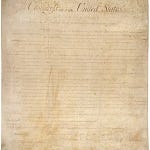This Day in Legal History: Free Exercise Clause Applies to States
On this day, May 20, in 1940, the United States Supreme Court made a landmark decision in the case of Cantwell v. Connecticut, significantly shaping the landscape of religious freedom in America. The Court held that the Free Exercise Clause of the First Amendment, which guarantees individuals the right to practice their religion freely, applied to state governments. This decision was pivotal as it extended the protections of the Bill of Rights to state actions, not just federal, through the incorporation doctrine.
The incorporation doctrine is a constitutional principle that ensures the fundamental rights and freedoms outlined in the Bill of Rights are protected against infringement by state governments. This doctrine relies on the Due Process Clause of the Fourteenth Amendment, which has been interpreted to incorporate most of the protections guaranteed in the Bill of Rights. The Cantwell case was a critical moment in the application of this doctrine, marking the first time the Supreme Court applied the Free Exercise Clause to the states.
In Cantwell v. Connecticut, the case involved Jehovah's Witnesses who were arrested for soliciting without a permit and for inciting a breach of the peace. The Supreme Court ruled in favor of the Cantwells, stating that their arrests violated their First Amendment rights. This decision underscored the importance of protecting religious expression from state interference and set a precedent for future cases involving the incorporation of other Bill of Rights protections.
This ruling reinforced the principle that religious freedom is a fundamental right that must be respected by all levels of government, ensuring that individuals could practice their faith without undue state interference. It paved the way for broader interpretations of the First Amendment and fortified the legal framework that guards against religious discrimination and promotes religious liberty in the United States.
Donald Trump, currently on trial in New York for falsifying business records, may testify in his defense this week, although his decision remains uncertain. While Trump initially indicated he would testify, his lawyer Todd Blanche has since expressed uncertainty. Trump faces 34 counts related to hush money payments to Stormy Daniels, aimed at silencing her allegations of an affair before the 2016 election, which Trump denies.
Outside the courtroom, Trump has labeled the trial a politically motivated effort to undermine his 2024 presidential campaign. Inside, he has listened to testimony, including lurid details from Daniels and accounts of efforts to suppress negative stories. Prosecutors are expected to conclude their case after testimony from Michael Cohen, Trump's former fixer who made the payment to Daniels.
Trump's legal team will soon present their defense, potentially calling witnesses, including Trump himself. If Trump chooses to testify, he could challenge the allegations directly but would also face rigorous cross-examination, posing risks of perjury and damaging his credibility. The outcome of this trial, one of four criminal cases Trump faces, could impact his political future.
Trump has the chance to testify at hush money trial - if he so chooses | Reuters
Colorado is set to become the first U.S. state to enact a comprehensive law regulating the use of artificial intelligence (AI) in employment and other critical areas with Senate Bill 24-205 (SB205). Passed on May 8 and awaiting Governor Jared Polis' signature, the law aims to prevent algorithmic discrimination and will take effect in 2026. It targets high-risk AI systems influencing decisions in employment, education, finance, government services, healthcare, housing, insurance, and legal services.
SB205 imposes significant compliance obligations on both developers and users of high-risk AI systems. Developers must provide detailed information about their AI systems, publish risk management strategies, and disclose known discrimination risks to the attorney general. Deployers are required to implement risk management policies, conduct annual impact assessments, and notify consumers about the use of AI systems in decision-making.
The law also mandates that businesses inform consumers about the purpose and nature of AI systems, their influence on decisions, and the right to opt out of profiling. The Colorado attorney general will enforce the law, treating violations as unfair and deceptive trade practices, though there is no private right of action. Businesses can defend themselves by showing they discovered and corrected violations through feedback or internal reviews.
This groundbreaking legislation is expected to influence broader AI regulation across the U.S., as other states consider similar measures, prompting employers nationwide to prepare for stricter AI compliance requirements.
Colorado Passes Groundbreaking AI Discrimination Law Impacting Employers
The U.S. Supreme Court upheld the Consumer Financial Protection Bureau’s (CFPB) funding mechanism, which allows it to draw funds from the Federal Reserve rather than through annual congressional appropriations. This 7-2 decision, issued on May 16, has broader implications for other financial regulators such as the Federal Reserve, Federal Deposit Insurance Corp. (FDIC), and the Office of the Comptroller of the Currency (OCC), which also rely on independent funding mechanisms.
Justice Elena Kagan, in a concurring opinion joined by Justices Sonia Sotomayor, Amy Coney Barrett, and Brett Kavanaugh, emphasized that Congress has historically used various funding mechanisms for federal agencies, underscoring the constitutionality of such arrangements. This decision signals to potential litigants that challenges against the funding of financial regulators are unlikely to succeed.
The ruling reassures that the established funding methods for these agencies, which include assessing fees on the banks they supervise, are constitutionally sound. The decision also highlighted that the independent funding of U.S. regulatory agencies has long been accepted due to its prevalence and practical necessity.
Dissenting Justices Samuel Alito and Neil Gorsuch, while disagreeing with the majority on the CFPB, did not find the funding methods of other regulators constitutionally problematic. They pointed out that the Federal Reserve, FDIC, and OCC operate on specific charges for services, contrasting with the CFPB’s unique funding ability.
Legal experts see this ruling as a robust defense of the current financial regulatory framework, suggesting that any future claims against the funding structures of these agencies will likely face significant hurdles. The case referenced is CFPB v. Community Financial Services Association of America, U.S., No. 22-448.
Banking Regulators See Relief From Funding Fights in CFPB Ruling
States poised to receive portions of $7 billion for bringing solar power to low-income communities face a significant skilled labor shortage in the construction industry. The Environmental Protection Agency (EPA) has selected 60 applicants, including many state energy departments, to implement the Solar for All program, aimed at providing residential solar to disadvantaged populations as part of the Greenhouse Gas Reduction Fund.
The program faces a shortage of 500,000 skilled construction workers, exacerbated by early retirements and recruitment challenges, according to Ben Brubeck of the Associated Builders and Contractors. The Department of Energy's 2023 US Energy and Employment Report noted that 97% of construction employers find it difficult to hire qualified solar workers.
The Solar for All funding encourages project labor agreements, which may deter non-union contractors. Currently, only about 11% of solar energy workers are unionized. This shortage raises concerns about maintaining high-quality and safe infrastructure.
Labor union representatives argue that the issue is more about wages than worker availability. Higher wages, as mandated by the program, might attract more skilled workers. However, the absence of solar-specific apprenticeship programs, unlike those in other construction sectors, contributes to the labor gap.
States like Michigan, Colorado, Washington, and New York are planning to address these workforce challenges during their planning periods. Michigan is considering partnerships with community colleges and labor organizations to meet the expected demand surge. Colorado aims to balance labor distribution between rural and urban areas, while Washington plans to require an apprentice for each solar installation project. New York will leverage federal funding to enhance its existing clean energy jobs and workforce development programs.
The EPA emphasizes that workforce development is crucial for the success of Solar for All, with many applications proposing partnerships to build a robust clean energy workforce.
States Set for Solar Cash Infusion Aim to Build Worker Pipeline
New federal staffing requirements for nursing homes, introduced by the Centers for Medicare & Medicaid Services (CMS) in April, aim to enhance care quality but face significant hurdles due to waivers and exemptions. These regulations, set to take full effect in 2026, mandate specific staffing levels for registered nurses (RNs) and nurse aides. However, federal laws and the Social Security Act allow states and the Health and Human Services (HHS) secretary to grant waivers, potentially delaying compliance for many facilities.
Thousands of nursing homes may qualify for exemptions from these staffing requirements, which worries advocates like Sam Brooks from the Consumer Voice for Quality Long-Term Care. These exemptions could disproportionately benefit poorly performing homes, undermining the rule's intent. Enforcement is further complicated by a shortage of state nursing home inspectors, affecting timely compliance verification.
The rule stipulates that facilities must provide 3.48 hours of care per resident per day (HPRD), with specific hours allocated to RNs and nurse aides. Significant staffing gaps exist, with an estimated need for 12,000 RNs and 77,000 nurse aides to meet the new standards. Facilities in nonrural areas have three years to comply, while rural ones have five.
Exemptions are not guaranteed; facilities must document efforts to hire staff and meet transparency requirements. Critics argue the exemption process is cumbersome and may lead to facility downsizing or closures, limiting seniors' access to care. CMS aims to encourage compliance through these transparency and documentation mandates, but industry representatives are concerned about the feasibility and impact of these rules. The ongoing labor shortage in the nursing home sector and the high cost of compliance, estimated at $43 billion over 10 years, present additional challenges to the successful implementation of these staffing requirements.
Nursing Home Watchers Wary of Staffing Rule Waivers, Exemptions













